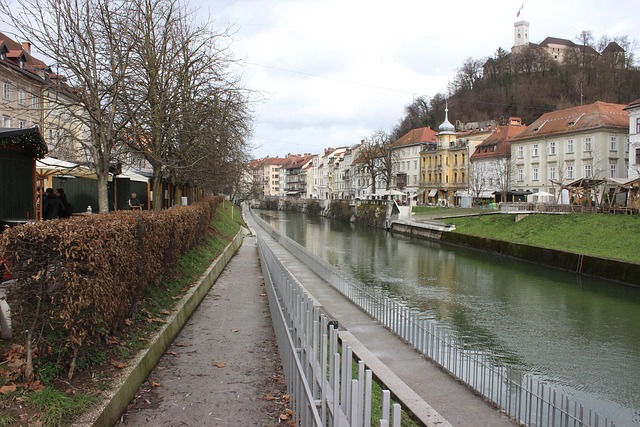Jinnah International Airport, Karachi, is a bustling gateway pivotal to Pakistan's global connectivity since its establishment in the 1950s. The airport has evolved with the city and country, modernizing to meet increasing air traffic demands. Today, it serves as a crucial node in the aviation network, offering advanced amenities and facilitating seamless travel within and outside dynamic Karachi, while gearing up for significant expansion to drive the city's economic future sustainably.
Jinnah International Airport (JIAA) in Karachi is a gateway to Pakistan’s vibrant metropolis, serving as a bustling hub for both domestic and international travel. This article delves into the history and development of JIAA, exploring its evolution from a modest facility to a modern, sprawling airport. We will uncover the comprehensive range of infrastructure and facilities it offers, assess its role in Karachi’s economic growth and connectivity, and examine future expansion plans amidst challenges.
- History and Development of Jinnah International Airport in Karachi
- Airport Infrastructure and Facilities: A Comprehensive Overview
- Role of the Airport in Karachi's Economic Growth and Connectivity
- Future Expansion Plans and Challenges for Karachi's Premier Airport
History and Development of Jinnah International Airport in Karachi

Jinnah International Airport, located in Karachi, Pakistan, has a rich history dating back to the 1950s when it was established as an important gateway for the country. Initially known as Karachi International Airport, it played a crucial role in connecting Karachi with the rest of the world. Over time, the airport witnessed significant development and modernization efforts, reflecting the growth of Pakistan’s aviation industry and the bustling metropolis of Karachi.
In the late 20th century, the need for an expanded and modern airport facility became evident due to the increasing air traffic and passenger volume. Consequently, the airport underwent a series of renovations and extensions, incorporating advanced technologies and infrastructure. Today, Jinnah International Airport stands as a testament to Pakistan’s commitment to enhancing connectivity and facilitating travel within and outside Karachi, making it a vital node in the global aviation network.
Airport Infrastructure and Facilities: A Comprehensive Overview

Jinnah International Airport (JIAs), located in Karachi, Pakistan, is a bustling hub that serves as the country’s primary gateway to the world. The airport boasts an extensive infrastructure designed to cater to a high volume of passengers and flights. Its state-of-the-art terminal buildings feature modern amenities, including comfortable seating areas, diverse dining options, and well-equipped restrooms, ensuring travelers have a pleasant experience throughout their journey.
The facilities at JIAs extend beyond the terminals, with ample parking spaces for various vehicle types, facilitating easy access for arriving and departing passengers. Additionally, the airport offers extensive ground transportation options, including taxi services, shuttle buses, and private car rentals, connecting passengers to Karachi’s hustle and bustle. These features, coupled with the airport’s strategic location, make Jinnah International a vital link between Karachi and the global community.
Role of the Airport in Karachi's Economic Growth and Connectivity

Jinnah International Airport (jia) plays a pivotal role in shaping Karachi’s economic landscape and its global connectivity. As the primary gateway to the vibrant metropolis, the airport facilitates seamless travel and trade, serving as a bustling hub for both domestic and international flights. This efficient connectivity enables businesses to thrive, attracts foreign investments, and fosters the growth of various sectors within the city.
The impact extends beyond economic boundaries; jia also acts as a catalyst for cultural exchange and tourism in Karachi. It connects the city with key global destinations, opening doors for cultural interactions and enriching travel experiences. The airport’s strategic location and well-organized infrastructure contribute to Karachi’s reputation as a dynamic business center and a captivating tourist destination, further amplifying its economic growth potential.
Future Expansion Plans and Challenges for Karachi's Premier Airport

Jinnah International Airport (jia), Karachi’s premier aviation gateway, has long been a vital cog in the city’s and Pakistan’s economic machinery. However, with increasing passenger traffic and evolving global aviation standards, future expansion plans for JIA face both opportunities and challenges. The airport is poised to expand its terminal capacities and enhance its infrastructure to accommodate more flights and passengers. This involves modernizing existing facilities and introducing advanced technologies to streamline operations.
One of the primary challenges lies in balancing rapid development with the environmental and social impacts on the surrounding urban landscape of Karachi. Ensuring sustainable growth while maintaining the airport’s efficiency and safety standards is a delicate task. Additionally, managing air traffic congestion and noise pollution will be crucial as JIA continues its journey towards becoming a regional aviation hub. Effective planning, collaboration between stakeholders, and innovative solutions will be key to overcoming these challenges and securing a prosperous future for Karachi’s premier airport.
Jinnah International Airport (JIAA) in Karachi stands as a pivotal gateway, facilitating both economic growth and connectivity for Pakistan’s vibrant metropolis. This historic airport has witnessed significant development, evolving from its initial establishment to become a bustling hub that connects Karachi to the world. As the city continues to thrive, JIAA plays a crucial role in supporting its economic aspirations through enhanced infrastructure and expanding flight networks. While future expansion plans aim to address growing passenger demands, challenges remain, highlighting the need for continued investment in airport development to secure Karachi‘s position as a regional aviation leader.
